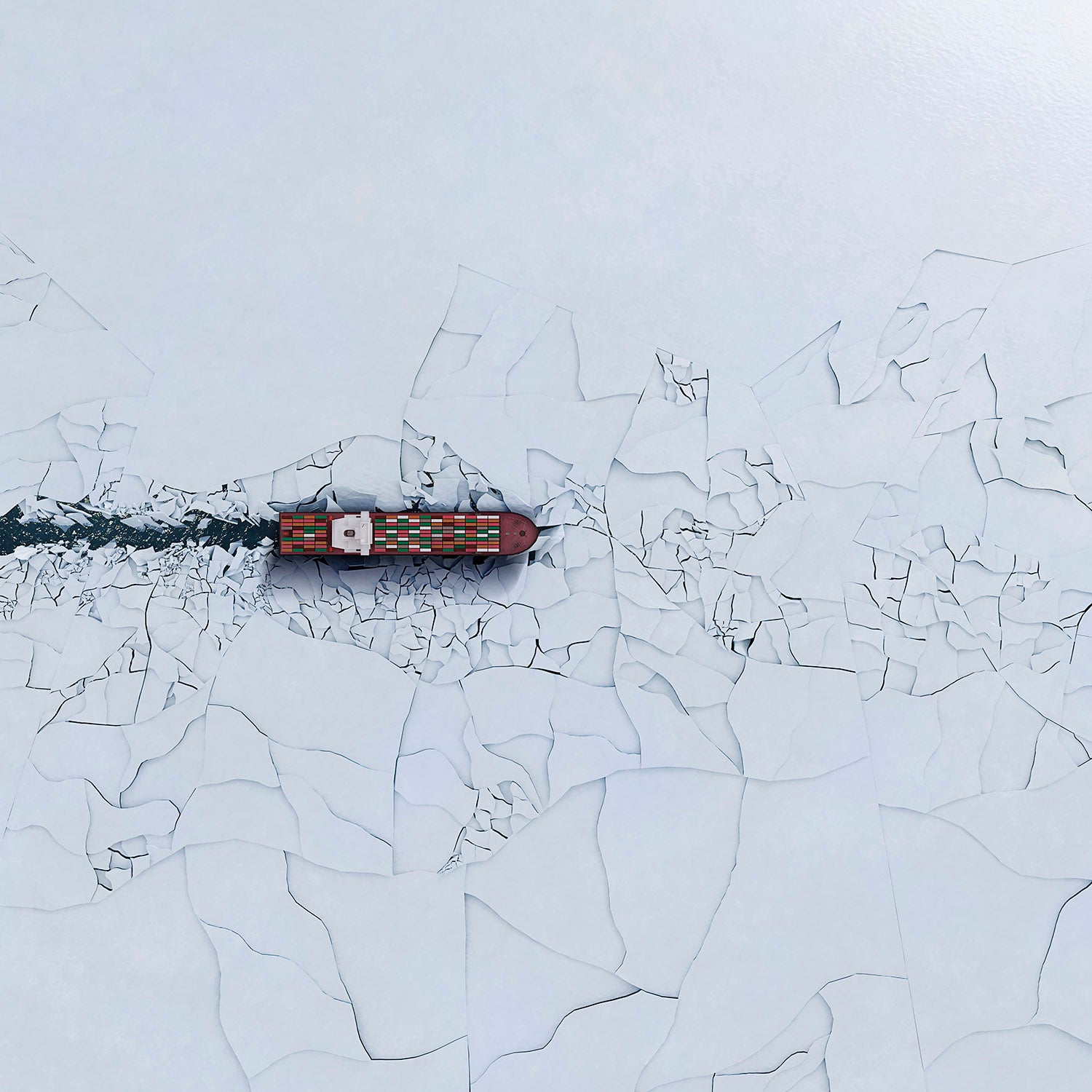
The shipping industry dealt with the fallout of the Covid-19 pandemic in 2022 and is now set to focus on the challenges posed by the green transition. Shipowners and ship operators are becoming increasingly well-equipped to ensure their fleets are environmentally friendly.
The industry has demonstrated the importance of collaboration given the geopolitical circumstances in 2022 and pandemic-related restrictions. An increase in collaboration is expected to be seen in various aspects of the industry including the green transition.
Industry experts share their expectations for collaboration, green transition, security, and energy cost trends in 2023.

Pelle Sommansson, chief product and AI officer at ZeroNorth
“One trend we expect to see come to the fore in 2023 is increased collaboration across the industry. 2022 was a year of extreme transformation and increased complexities.
“However, it also showed us the maritime industry is capable of overcoming supply chain issues, effectively responding to geopolitical tensions and ongoing Covid-19 restrictions, if organisations commit to working together.
“This is especially important given that shipping faces a number of challenges when it comes to driving the green transition – from logistical capabilities in reducing emissions and meeting new regulatory requirements to the commercial impact this will have on businesses’ bottom line.
“Last year, there was industry conversation surrounding the CII regulations which came into force in January 2023. There has been much criticism and speculation regarding the efficacy of the new requirements, but a happy by-product has been the increased discussions between ship owners and charterers on environmental issues.
“In 2023, this conversation will continue, with leaders from across the maritime industry coming together to align around their mutual environmental and commercial goals in the drive to creating greener, more efficient and more profitable operations.
“A path is needed to be able to take meaningful steps towards more sustainable outcomes, and data-driven technologies will continue to play a huge role. Organisations will embrace unified data platforms that deliver one true source of data, connecting different stakeholders – from ship to shore, operations and charterers – by providing them with access to the same data points.
“This will enhance industry collaboration and accelerate environmental efforts, using data-driven insights to drive efficiencies for the benefit of profits and the planet.

Sean McLaughlin, strategy consultant at Houlder
“Collaboration on maritime energy efficiency, renewable propulsion and auxiliary technology – also known as clean technology – will be crucial to the shipping industry’s decarbonisation efforts in 2023. That is, collaboration between clean technology companies and shipowners, as well as between shipowners themselves.
“While the need to collaborate has been established for many years, we have recognised that often the reality does not match the rhetoric. Collaboration has become a decarbonisation buzzword but significant barriers to cooperation remain in practice. The Houlder team uncovered this collaboration challenge when we surveyed shipowners from across the container, tanker, bulk, cruise and ferry sectors as part of its sustainability advisory work.
“Every senior industry player interviewed confirmed that there is a willingness to collaborate and that it is critical to achieving rapid, fundamental change. However, collaboration is less evident in practice, as owners focus on achieving emissions reductions while safeguarding competitive advantage.
“Owners identified a lack of good quality and relevant operating data as a key barrier to the uptake of clean technology. There is also a perceived shortage of independent corroboration for the claims made by some technology vendors.
“None of the participants accused technology providers of suggesting deliberately misleading results but reflected that the data in a brochure will inevitably relate to another ship. So the results (and the unintended consequences) of any technology intervention need to be recognised as a retrospective, and sometimes fundamental, design change.
“There is an abundance of effective clean technologies available, and investments offer a clear opportunity to reduce emissions and costs through lower fuel use. It is often cost and time efficient to fit, whether retrofitting the existing fleet or integrating technology into newbuilds.
“Vessel efficiency improvements can also help shipowners navigate the complex maze of decarbonisation regulations, including the International Maritime Organization’s Carbon Intensity Indicator (IMO CIII) – which was implemented in January 2023.
“Effective collaboration needs convenors to safeguard participants and break down barriers. Convenors can act as a central black box, bringing sensitive information together to paint the full picture while protecting the confidentiality of the data owners. They can also help shipowners share the cost of trialling a new technology while giving them all access to the benefits.
“Collaboration is more than just shipowners sharing technical data on a new technology. It encompasses all stakeholders and often supply chains as well. We cannot expect collaboration to “just happen” – there has to be more proactive convenors. Flag states, national chambers and the international chamber, industry coalitions and independent consultants all have a key convening role to play if significant barriers are to be overcome.”

Fabien Rech, SVP EMEA of Trellix
“The transportation and shipping sector is vital for businesses and countries to manage supply both within and across borders.
“We’re increasingly seeing critical infrastructure like this targeted by cybercriminals, as the impact of a successful attack can be particularly widespread and disruptive.
“Our research shows that the transportation and shipping industry is now at high risk, having emerged as one of the most targeted sectors globally.
“From a nation-state perspective, we can see the transportation and shipping industry has been the most impacted by APT-group-led campaigns, accounting for over a quarter (27%) of attacks.
“The sector has also become a prime target for ransomware campaigns, comprising almost a third (31%) of detected attacks – second only to the telecoms sector which was impacted by just under half (47%) of the ransomware activity observed.
“It’s now all the more crucial for transportation and shipping organisations to bolster their defences if they are to successfully defend against increasingly sophisticated attacks. By implementing a living security architecture that can readily mould and adapt to emerging threats, organisations can better mitigate against attacks – protecting their supply chains and avoiding widescale disruption.”

Mikael Mahlberg, head of PR & Communications, Candela
“We see that spiking energy costs, and the need to shift transport away from fossil fuels, truly start to influence procurers’ and operators’ mindsets and decisions. We’re in discussions with about 150 cities and far more private operators regarding our zero-emission foiling vessels to reduce operating costs while cutting travel times and increasing departures.
“There’s also a new interest from operators and procurers to challenge the current requirements put on vessels. More people are embracing our vision of switching the transport system away from fleets of few, big and costly vessels that mostly run well below their peak passenger capacity, to a nimbler system which deploys a larger numbers of smaller, faster electric vessels.
“The discussion is starting to change from “how many passengers can this ship carry” to “how many passengers can you move per hour and at what cost”.
“By shifting to a waterborne transport system that is more similar to a bus line or a subway system, with smaller units and more frequent departures, waterborne traffic can again become a competitive mode of transport in cities.
“The vessel that enables this shift is our P-12 Shuttle, a 30-person ship that rivals hybrid buses in terms of operational costs per seat. In Stockholm, it will be faster than the buses and cars it competes directly with.
“We also see a budding discussion on how the waterways could be used more efficiently. As cities explore intermodal transport, they’re putting a bigger emphasis on the waterways, which so far have been unused for high-speed mass transit. Current speed limits, often put in place because of wakes rather than the inherent dangers of speed itself, may be re-evaluated – as in Stockholm, where our first foiling P-12 will be given an exemption as it doesn’t create wakes.
“The city of Stockholm has vowed to shift car commuting to waterborne transport. Many cities, from Oslo to Rotterdam, have ambitions to electrify their fleets of public transport vessels.”



